
What is Monroe’s Motivated Sequence Pareto Labs
Monroe's motivated sequence is a persuasive structure that focuses on leading audiences to take a specific action. By following the five steps - attention, need, satisfaction, visualization, and.

What is Monroe’s Motivated Sequence Pareto Labs
Monroe's motivated sequence is a prescribed organizational structure for persuasive speeches, public speaking, and written arguments. Alan H. Monroe, a psychologist and professor at Purdue University, created the sequence and published it in his 1943 book, Monroe's Principles of Speech. The sequence contains five basic steps—attention, need.

The Code Coach How to Persuade
Table 8.1.1 8.1. 1 "Monroe's Motivated Sequence" lists the basic steps of Monroe's motivated sequence and the subsequent reaction a speaker desires from his or her audience. I want to listen to the speaker. Something needs to be done about the problem. Satisfaction —Satisfying the Need, Presenting the Solution.

Monroe’s motivated sequence
Monroe's Motivated Sequence (MMS) is a five-step persuasive communication approach developed in the 1930s by Alan H. Monroe that grabs attention, presents a problem, offers a solution, creates a vision of success, and urges action. It aims to rouse, influence, and induce action among audiences in response to a specific issue.
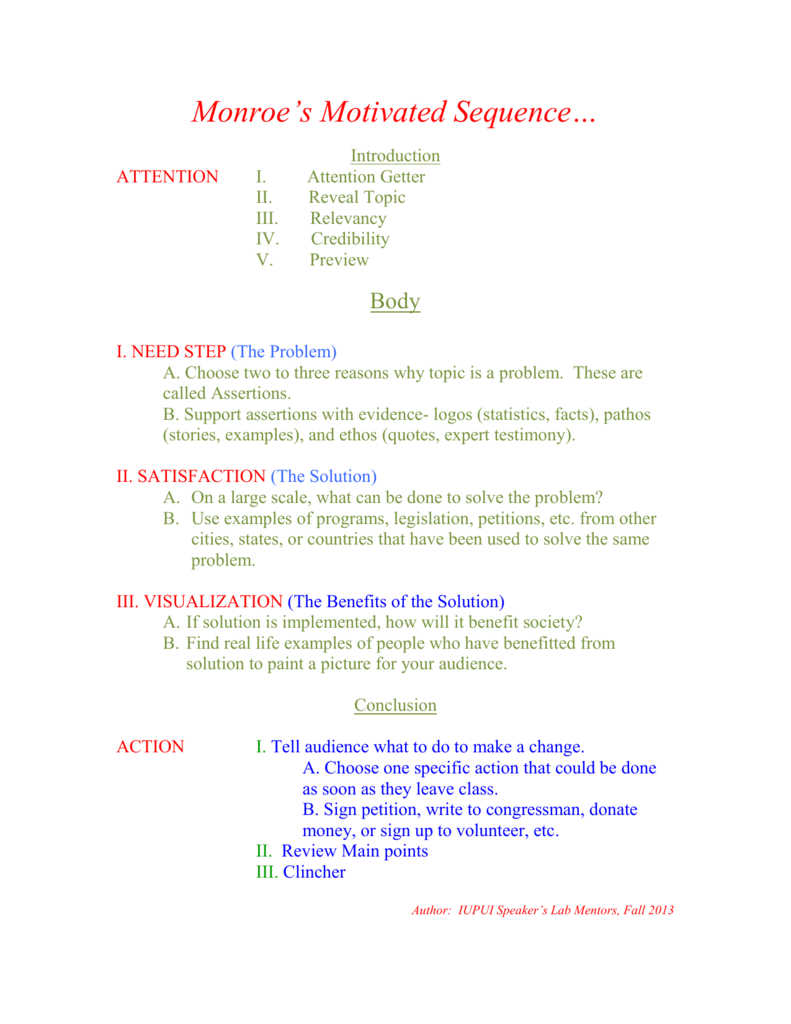
Monroe's Motivated Sequence…
Monroe's Motivated Sequence is a simple sequence of steps, with a clear structure, that makes it an effective method to organize and deliver persuasive speeches, influencing audiences to take action. You can follow the technique when giving a speech at work, a conference, or any networking event. It will also work well when giving a sales.
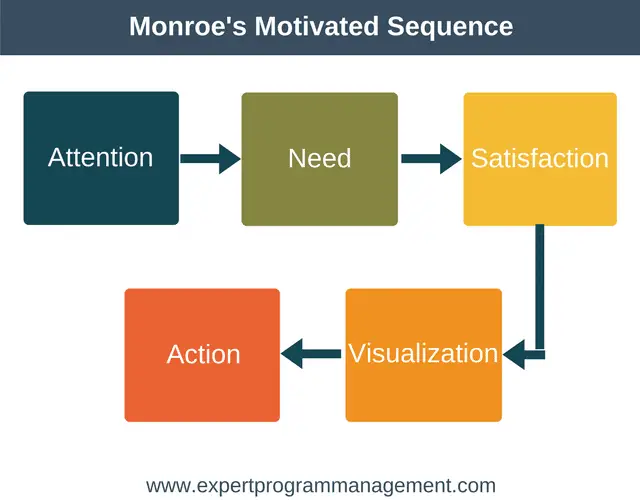
Monroe’s Motivated Sequence Expert Program Management
Key Takeaway. Alan H. Monroe's (1935) motivated sequence is a commonly used speech format that is used by many people to effectively organize persuasive messages. The pattern consists of five basic stages: attention, need, satisfaction, visualization, and action. In the first stage, a speaker gets an audience's attention.
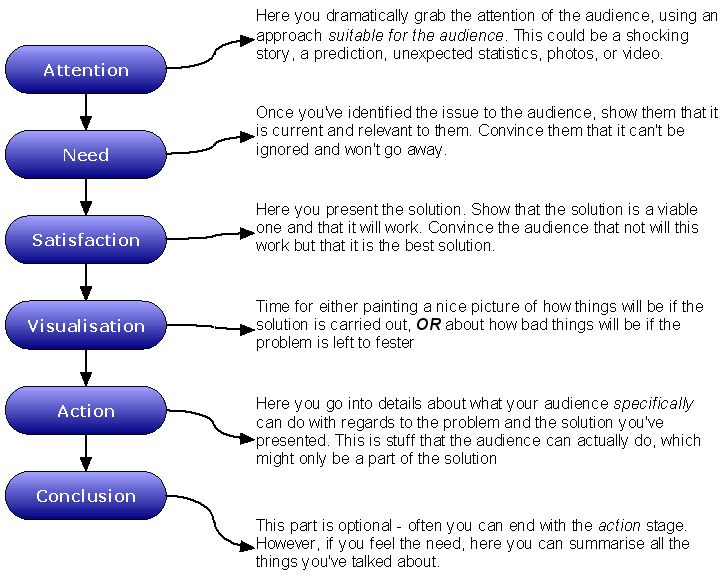
The Monroe motivated sequence
Monroe's Motivated Sequence. Monroe's Motivated Sequence (MMS) is an organizational pattern used to develop a sense of want or need in the audience, satisfy that want or need, and to help the audience get enthused about the advantages of that solution.. Need versus Want . Before presenting MMS, it is important to understand the difference between a need and a want.
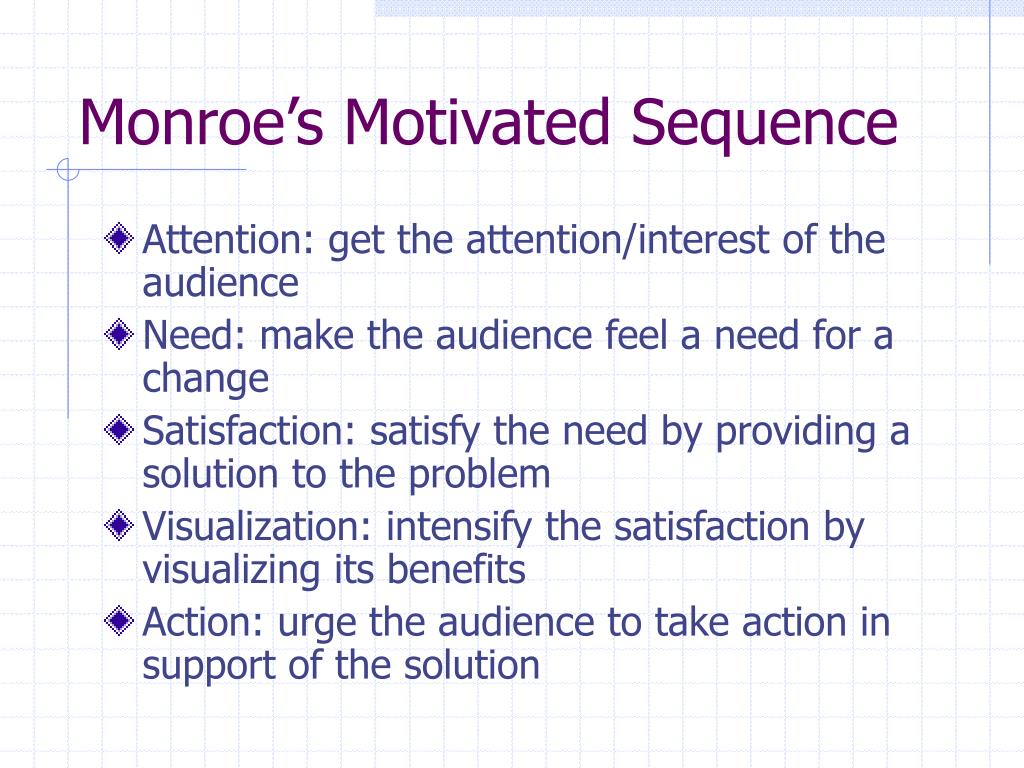
PPT Speaking to Persuade PowerPoint Presentation, free download ID1112589
Monroe's motivated sequence is a presentation technique you can use to deliver a convincing speech, one that may motivate an audience to take action. In this article, we define Monroe's motivated sequence, list the five basic steps in a motivated sequence speech or pitch, provide an example of this technique for you to reference and describe.
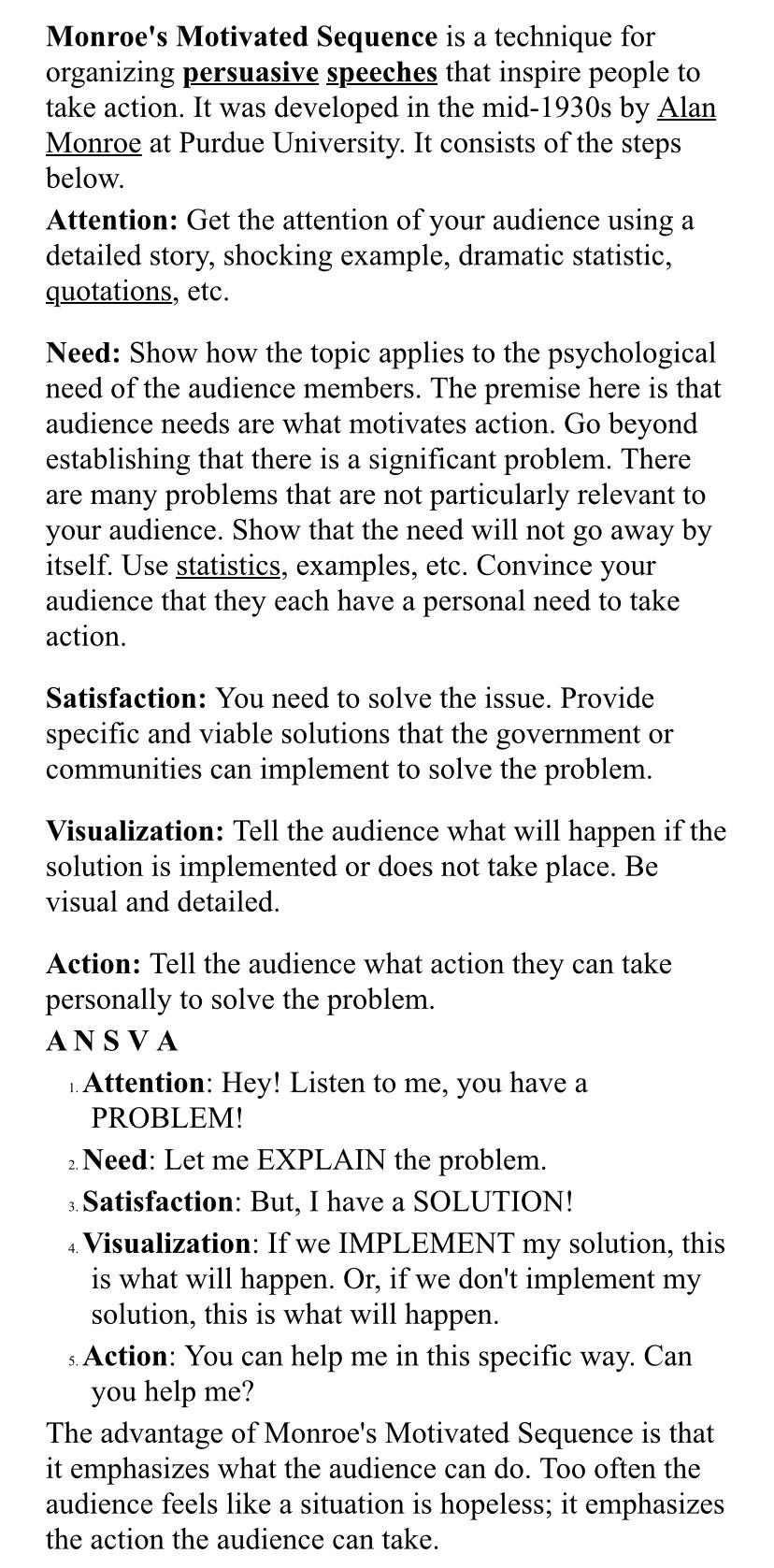
Monroe's Motivated Sequence is a technique for
The Five Steps of Monroe's Motivated Sequence 1: Attention Grab your audience's attention! You can utilize a quote, story, or visual to draw them in. 2: Need Present a relevant issue to your audience, and help them understand why they should care about that need. 3: Satisfaction Offer a plan that satisfies the audience's needs. Explain.

How Monroe's Motivated Sequence could make your speech persuasive Blogely
Monroe's Motivated Sequence is explained and examples are provided for how to use it in a persuasive speech. This video would be helpful for an introductory.
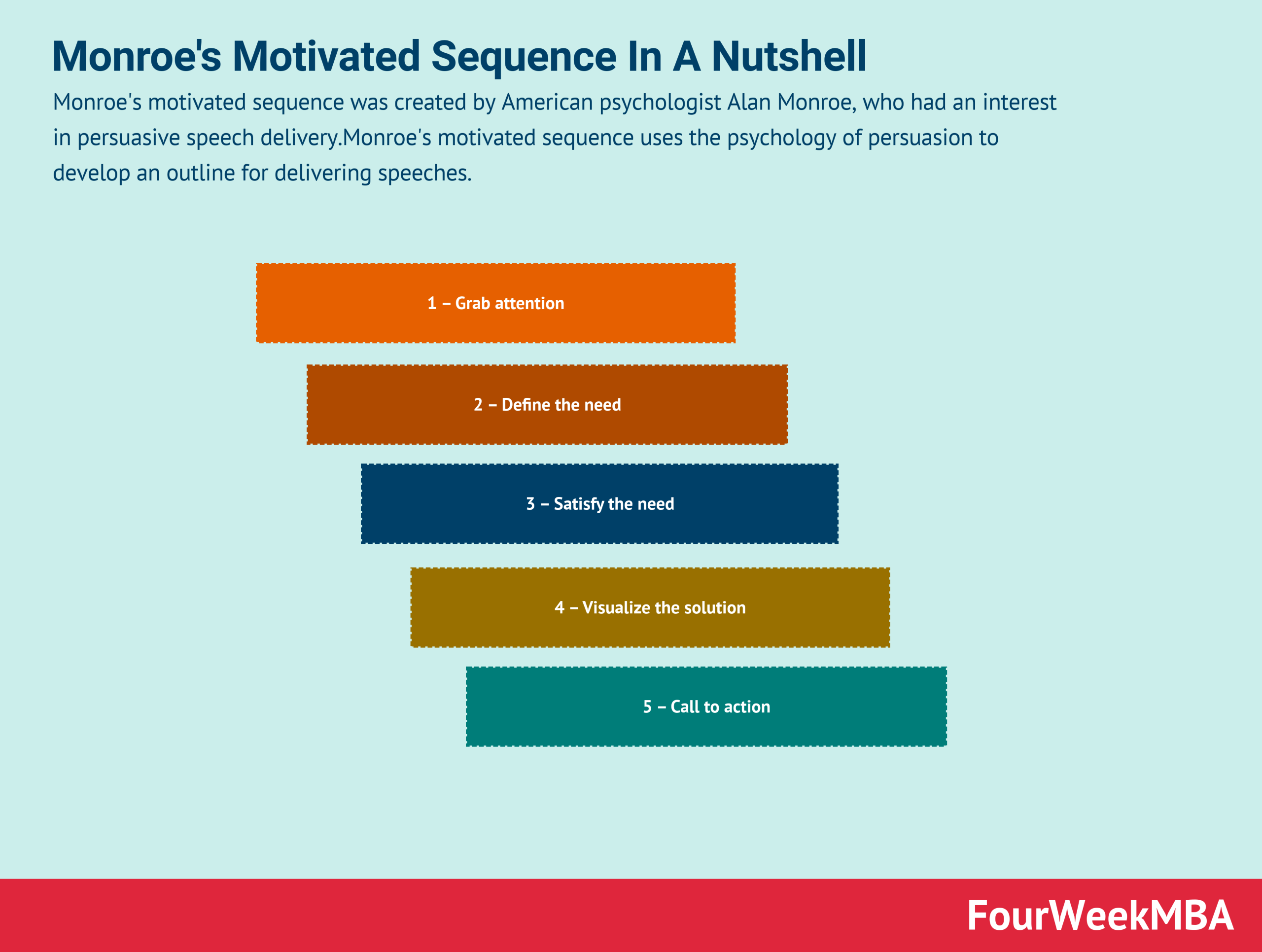
Monroe's Motivated Sequence In A Nutshell FourWeekMBA
Monroe's Motivated Sequence is a process for structuring a presentation or speech that addresses both of these issues. Alan H. Monroe was a professor of Communication at Purdue university, and underpinned by the power of human psychology, he created Monroe's Motivated Sequence in the 1930's to help people create a compelling and.

Monroe's Motivated Sequence is a persuasive speaking format. It's a variation of the problem
Discover a persuasive speech outline called Monroe's Motivated Sequence. This outline will help you write an argumentative essay, article, or speech that will inspire your audience to action.
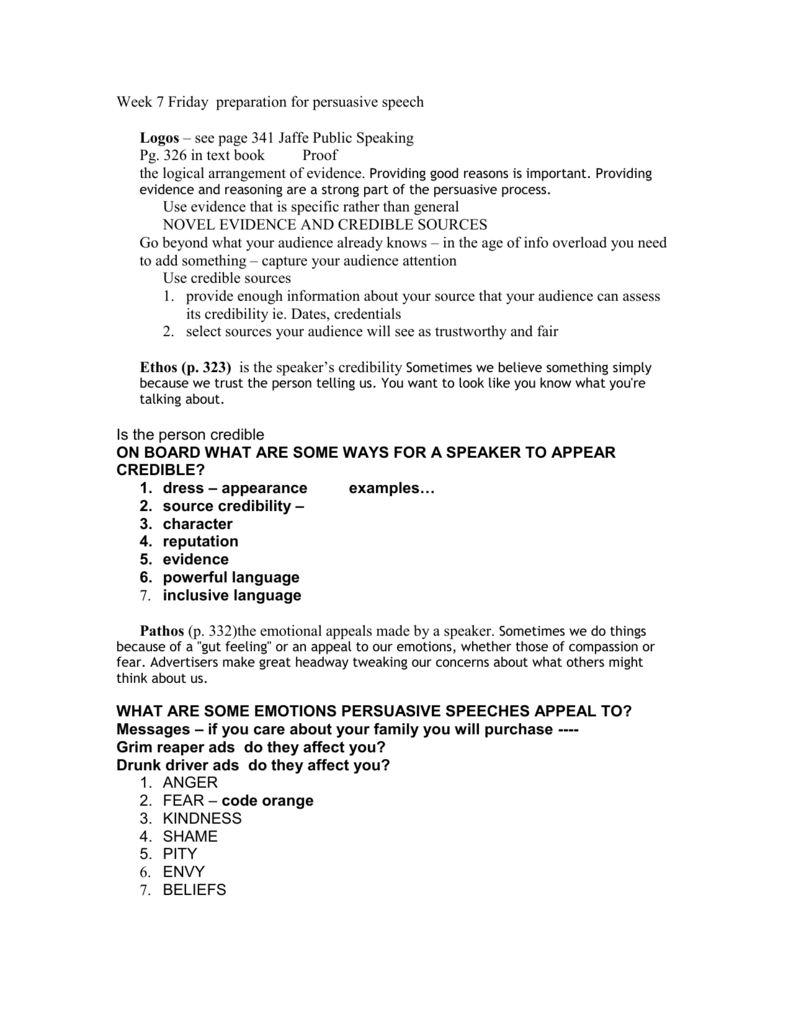
Monroe's Motivated Sequence
Monroe's motivated sequence is a technique for organizing persuasion that inspires people to take action. Alan H. Monroe developed this sequence in the mid-1930s. [1] This sequence is unique because it strategically places these strategies to arouse the audience's attention and motivate them toward a specific goal or action.

Monroe's Motivated Sequence Cognition Psychology & Cognitive Science
Table 12.6 Sample Organizing Principles for a Speech. Organizing Principle. Explanation. Applied Example. 1. Time (Chronological) Structuring your speech by time shows a series of events or steps in a process, which typically has a beginning, middle, and end. "Once upon a time stories" follow a chronological pattern.
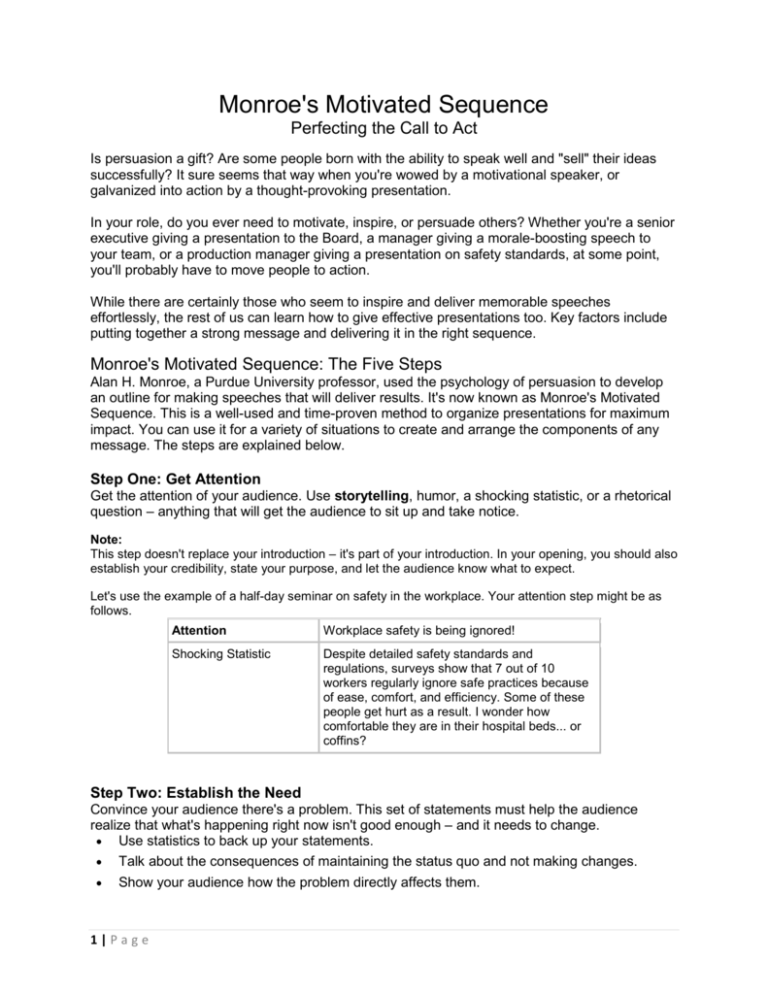
Monroe's Motivated Sequence
Alan H. Monroe, a Purdue University professor, used the psychology of persuasion to develop an outline for making speeches that will deliver results, and wrote about it in his book Monroe's Principles of Speech. It's now known as Monroe's Motivated Sequence. This is a well-used and time-proven method to organize presentations for maximum impact.

Click and drag the following options into the order of steps in monroe’s motivated sequence.
Monroe's Motivated Sequence was developed by Alan H. Monroe, a professor of speech at Purdue University, in the 1930s. At the time, Monroe was studying psychology and persuasion principles, and he wanted to develop a framework for creating more effective speeches. Monroe's Motivated Sequence was the result of years of research and.